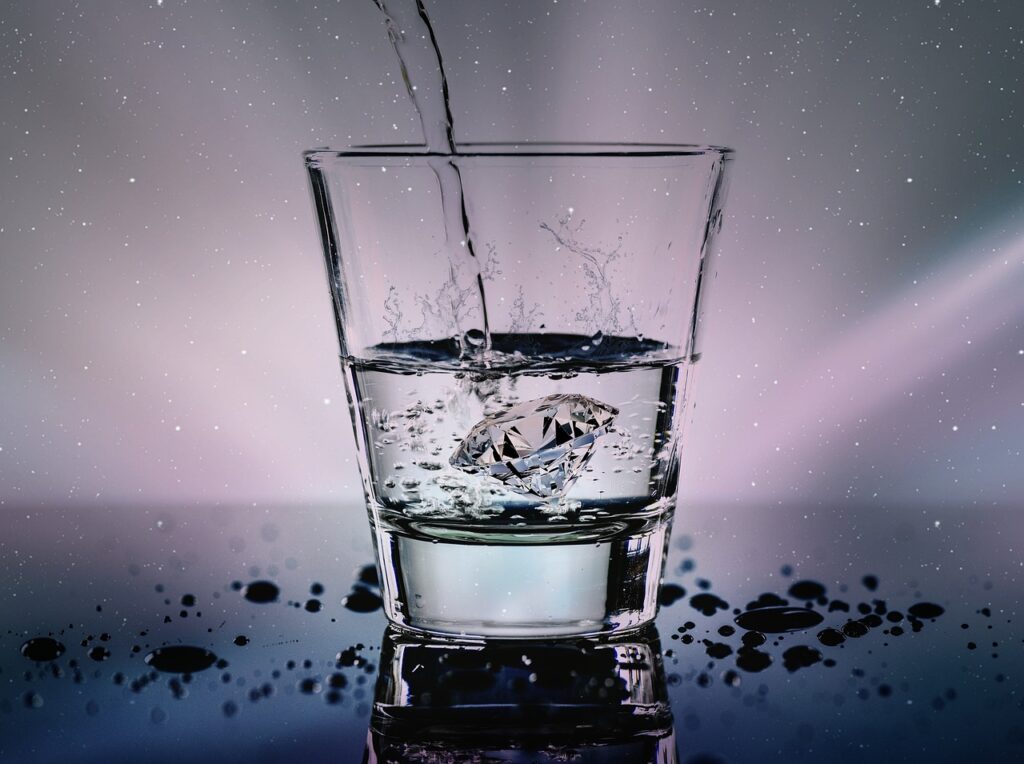
ISPRA, the Italian Institute for Environmental Protection and Research, provides a significant figure for the tourism sector: 4 litres per day per tourist. This indicator (updated as of 2022) aims to provide a quantitative measure of the contribution of tourists to daily drinking water consumption.
Data, in general, is crucial for assessing the situation and choosing the right strategy.
For example, ISTAT informs us that an Italian resident requires 215 litres per day.
If compared with the daily water requirement per inhabitant in Italy, 4 litres of the tourist’s need could be considered unimportant, but in reality, ISPRA’s figure is not real.
To understand what I mean, one has to see how ISPRA’s method for calculating the figure works. Thanks to artificial intelligence for this explanation:
How the calculation works
ISPRA uses the following logic:
💧Adjusted per capita water consumption =
Total annual volume supplied / (Resident population + “tourist population equivalent”)
Then this value is compared with the “standard” consumption for residents only.
The difference between the two values is attributed to tourism.
Example:
Item | Value |
Water supplied (yearly total) | 1.000.000 m³ |
Number of Residents | 100.000 |
Tourist presences | 500.000 |
Tourist population equivalent = 500.000 / 365 | ~1.370 |
👉 Add the 100,000 residents and the 1,370 “equivalent” tourists, and divide the water by 101,370 equivalent inhabitants.
If the per capita consumption with tourists is higher than without tourists, the difference is attributed to the impact of tourism.
ISPRA's Approach limits
ISPRA’s approach has some limitations for the practical needs of the tourism sector:
Time factor:
Data are considered on an annual basis, despite the tourism sector’s seasonality.
Doing so underestimates high season periods.
Only official data, which does not include:
- Tourists in second homes
- Day visitors (cruise passengers, excursionists, daytrippers in general)
- Unrecorded presences.
Water loss is not accurately attributed.
Indirect consumption is not considered:
- Industrial laundries,
- Irrigation of public parks,
- Fountains,
- or auxiliary services (catering, tourist transport).
If we take these limitations into account to calculate the daily water requirement of a tourist in Italy, we must supplement the ISPRA data with:
- Direct measurements from accommodation facilities,
- Surveys on tourist behaviour,
- Data on seasonality,
- Daily tourist load models.
A realistic and comparative estimate of water consumption per tourist per day based on the main categories of accommodation in Italy.
Hotels and Resorts (3-5 stars)
Estimated Consumption: 150-300 litres per tourist per day, including:
- Bathroom in the room (shower, WC, sink),
- Industrial laundry (towels, sheets),
- Restaurant and bar,
- Daily cleaning,
- Swimming pools and wellness areas (if present),
- Watering of gardens or green spaces.
Campsites and holiday villages
Estimated Consumption: 70-120 litres per tourist per day, including:
- Shared showers and toilets,
- Washing dishes and laundry,
- Watering of green areas is sometimes supplemented by the use of swimming pools or decorative fountains for this purpose.
Rural tourism / Agrotourism
Estimated Consumption: 80-180 litres per tourist per day, including:
- Use of bathroom and kitchen (often also self-catering),
- Cleaning of a room or a flat,
- Watering of vegetable gardens/gardens,
- Local production (wine, oil, agricultural products with indirect water use).
Holiday homes / Airbnb
Estimated Consumption: 90-130 litres per tourist per day, including:
- Private domestic use (shower, kitchen, WC),
- The host often pays for laundry,
- Rarely a swimming pool or garden.
Hostels, B&Bs, refuges
Estimated Consumption: 60-100 litres per tourist per day, including:
- Shared facilities,
- Minimal breakfast and cleaning,
- Low Consumption due to the absence of green areas or extra services.
Sources
Data on tourism water consumption for different categories of accommodation facilities in Italy are derived from a combination of sources, including analyses of water consumption in the tourism sector, official resources from public bodies, and estimates based on sector studies. Here is a list of the primary sources used to produce the forecast:
- ISPRA and National Environmental Data
The ISPRA provides official data on water consumption in the tourism sector.
The Ministry of the Environment (https://www.mase.gov.it/portale/home) provides analyses on water efficiency, including those related to the tourism sector.
- Sector studies and research reports
European Environmental Agency (EEA): Analyses the impact of different types of accommodations on water consumption, including swimming pools, restaurants, and other services that have the most significant effect on water needs (EEA – Water consumption and tourism).
UN Tourism (ex World Tourism Organisation): offers reports on sustainable tourism that also examine the consumption of natural resources in tourism destinations, including water consumption.
Studies by Universities and Research Centres in Tourism Economics (e.g., Bocconi University, University of Venice, and other research centres focusing on tourism sustainability) provide in-depth analyses of water consumption by the type of tourism.
- Sources from the tourism industry
FIAVET (Federazione Italiana Associazioni Imprese di Viaggi e Turismo) reports and other tourism industry associations, which offer analyses on accommodation facilities and natural resource management (FIAVET).
Reports and surveys on accommodation facilities, such as those conducted by bodies like Confcommercio and Federalberghi, provide detailed information on energy and water consumption by type of hotel and tourist activity.
- Consultancy reports and publications of private companies
Several environmental consultancies (e.g. Sustainable Tourism Consultancy) and resource management companies (e.g. WaterWISE, which analyses and optimises water consumption in tourism) provide specific water consumption estimates for tourist destinations and accommodation types.
These studies combine accommodation monitoring, large-scale consumption surveys and sustainable practices implemented to calculate actual water consumption by tourists.
🌱 Sustainability starts with knowing your numbers.
Let’s calculate your destination’s real water footprint—together. Please message me, it’s easier than you think!
Sara
Would you like to subscribe to my newsletter? In English, I am using the LinkedIn newsletter. I want to use it because I understand more about who has subscribed via the LinkedIn profile. Here is the link: https://www.linkedin.com/newsletters/7107445901593313280/